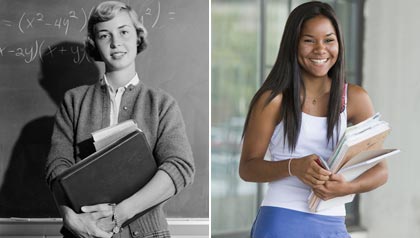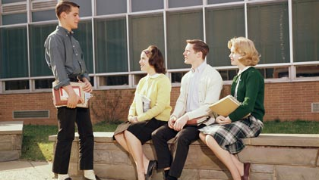Staying Fit


If you were 16 again and ordered by teachers to read this summer, what titles would you be unlocking on your Kindle or Nook?
Think The Hunger Games, not The Great Gatsby, and The Help, not The Odyssey. Today's high school reading lists lean toward popular contemporary books and away from the canonical titles that are more likely to be studied during the academic year.
Summer reading was mostly a voluntary pursuit when people who are now 50+ were whiling away summers. (See page 3 for more about high school reads circa 1963.) These days, however, summer reading is an assignment.


AARP Membership— $12 for your first year when you sign up for Automatic Renewal
Get instant access to members-only products and hundreds of discounts, a free second membership, and a subscription to AARP the Magazine.
Lists of suggested titles and requirements vary widely according to school, grade and course level, but there is a common goal: to cultivate a lifelong love of books. As Steven Heller, communication arts teacher at Adlai E. Stevenson High School in Lincolnshire, Ill., put it: "If you require the old classics over the summer, you'll drive kids to SparkNotes."
We studied reading lists from around the country and found the following books among the most common inclusions. There's a good chance your child or grandchild will be cracking one of them open this summer, so why not read along? A good read is a good read, no matter what your age.
The Book Thief, by Markus Zusak (2006)
A young girl living in Nazi Germany during World War II steals books and shares them with neighbors as well as with the Jewish refugee hiding in her foster family's basement.
The Poisonwood Bible, by Barbara Kingsolver (1998)
A Baptist family travels to the Belgian Congo in 1959 for missionary work, kicking off this sprawling story told over three decades in Africa.
The Things They Carried, by Tim O'Brien (1990)
Vietnam veteran O'Brien based this stirring collection of intertwined short stories on his own war experience.
The Joy Luck Club, by Amy Tan (1989)
In San Francisco, a close-knit group of women — four Chinese immigrants and their American-born daughters — gathers for a regular game of mah-jongg over a span of 40 years.
The Lovely Bones, by Alice Sebold (2002)
A murdered teenager watches from the afterlife as her family struggles to deal with her death and her father hunts for her killer.
The Curious Incident of the Dog in the Night-Time, by Mark Haddon (2003)
The novel's 15-year-old narrator with an autism spectrum condition is also its protagonist, searching to unravel the mysterious death of a neighborhood pup.
The Kite Runner, by Khaled Hosseini (2003)
A young boy in Kabul lives through a tumultuous period in Afghan history, from the fall of the monarchy to the rise of the Taliban. Hosseini's follow-up, 2007's A Thousand Splendid Suns, is also a popular summer reading list choice.


































































More on entertainment
Mika Brzezinski Talks Eating Disorder, Friendship and More
In her new book about food addiction, the 'Morning Joe' coanchor confronts a friend — and herself.